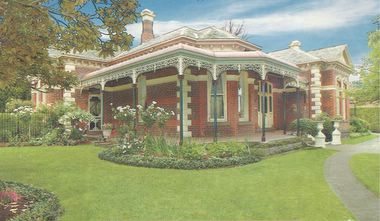Heating and Cooling System
 We've had the heating and cooling system running for some months now. I'm not that happy with the way it works - but I am going to get it modified to get it right.
We've had the heating and cooling system running for some months now. I'm not that happy with the way it works - but I am going to get it modified to get it right.Ducted heating using a centralised gas furnace is by far the most common method of central heating - in Melbourne, Austrlia. (Funnily enough though, our system is made in the USA!). For homes on suspended-timber floors like ours, the ducts are put in the sub-floor space. (Many new houses are built on slabs, and the heating ducts come through the ceiling, which causes problems with stratification of warm air at the top, and cooler air near the floor).
Our furnace has a power output of 120kW, which is probably quite moderate compared to systems found in colder parts of the world (it rarely gets below freezing here). The blower/fan can pump the entire volume of air in the house about once every 15 minutes, so ducted systems usually give the impression of quick, instant heat, even though the fabric of the building takes many hours to follow the room temperature upwards.

Its generally recognised that "convection" heaters (also called hydronic) using heated water or oil pumped around to "convectors" in each room provide the best level of comfort. The difference in the heated air quality can only be the level of humidity - centralised furnaces tend to dry the air due to the higher surface temperatures of the heat exchanger. To counter this, we also installed an humidifier to our ducted system, to increase the humidity of heated air.

Originally we were not going to install cooling, but Julie easily talked me into it. The evaporator (cooling coil) is located in the same unit at the furnace, and is made by the same manufacturer. The condenser is separate, and is located some 6 metres away from the house, behind the garage. The system capcity is about 15kW so it can only cool about half the house.




1 Comments:
Choosing an efficient heating or cooling system for your house will help you maintain healthy indoor temperatures, reduce greenhouse gas emissions, and wield your power bill.
Heating and Cooling Systems Toronto
Post a Comment
<< Home